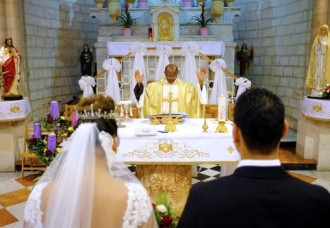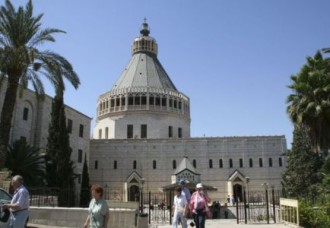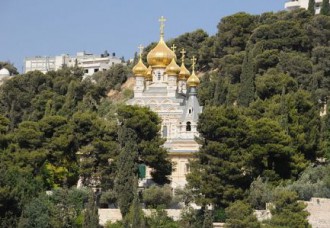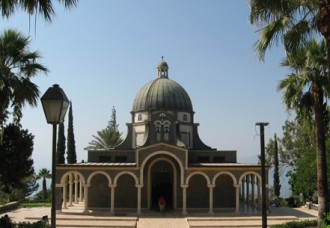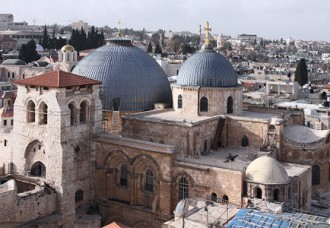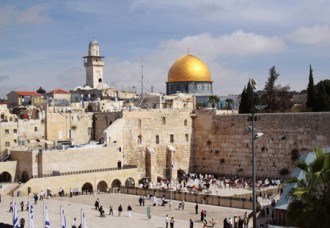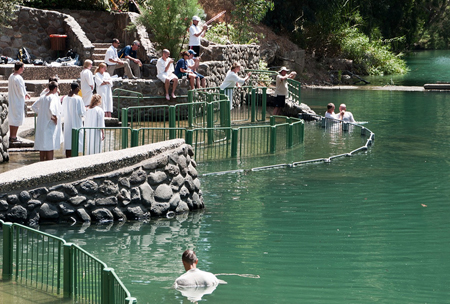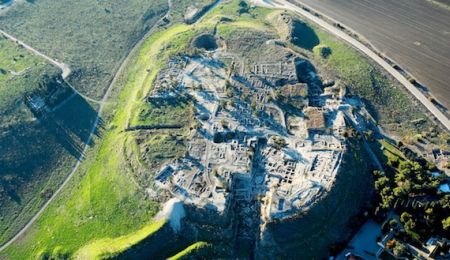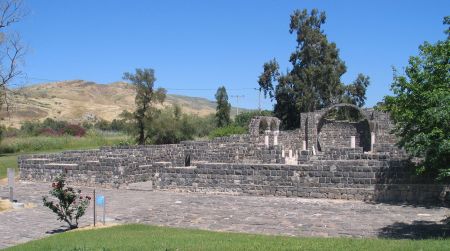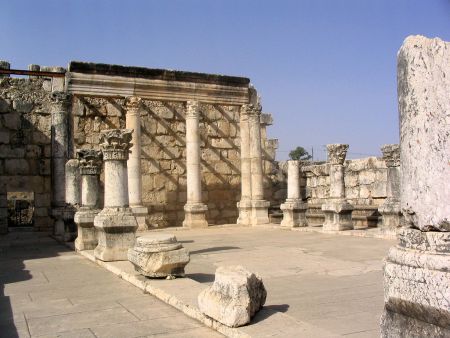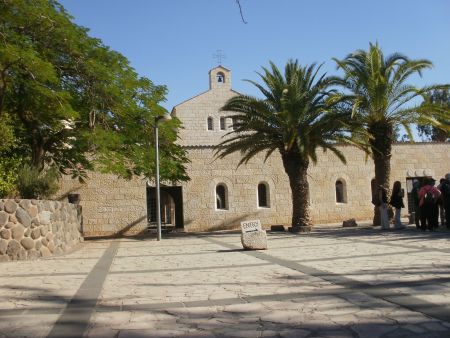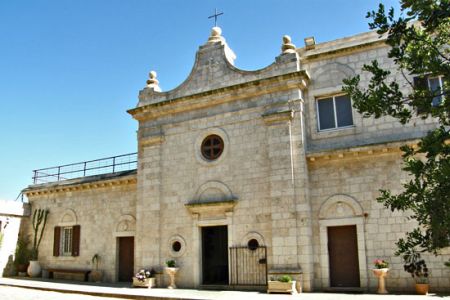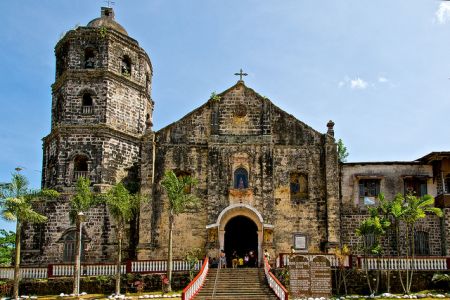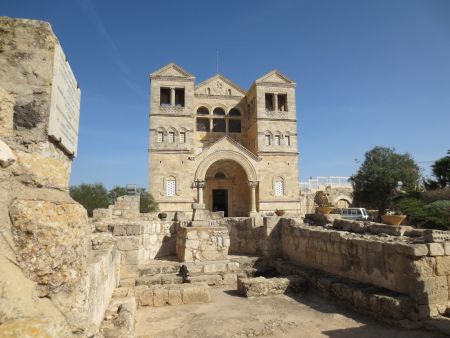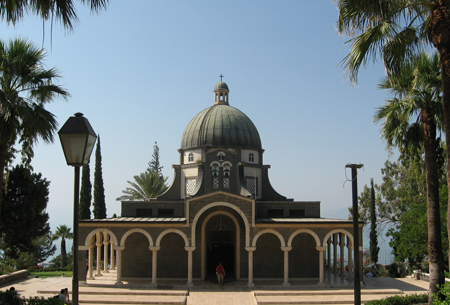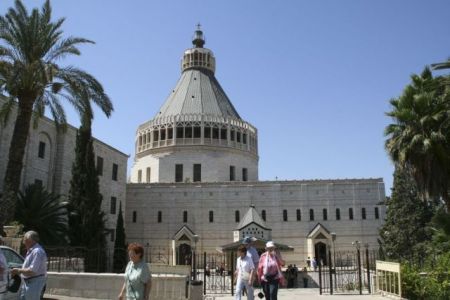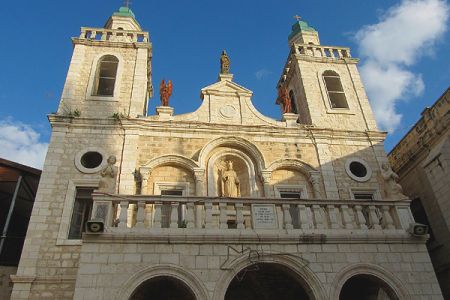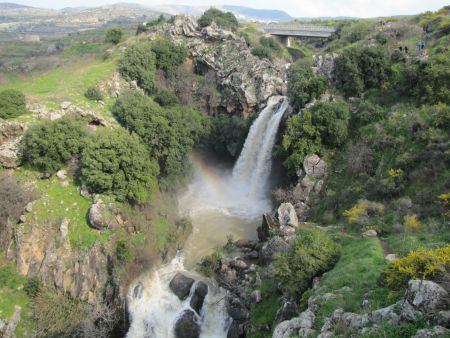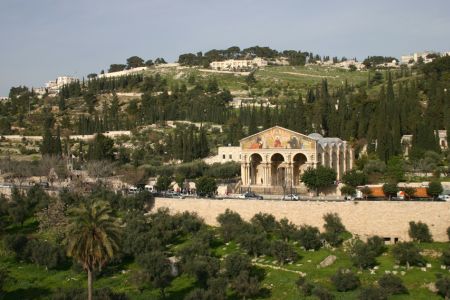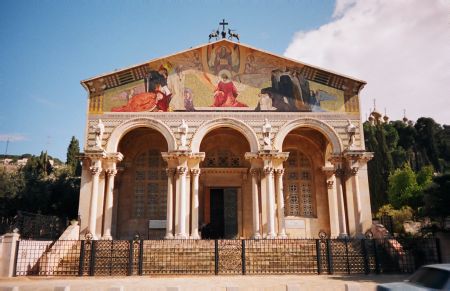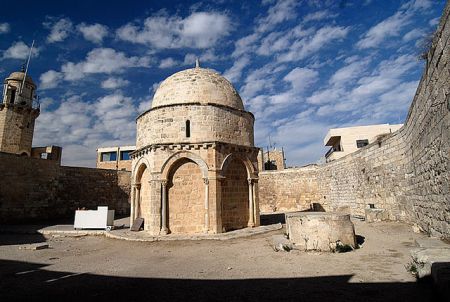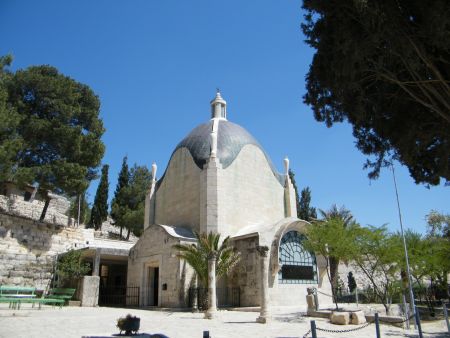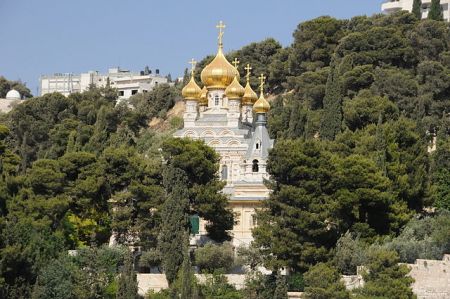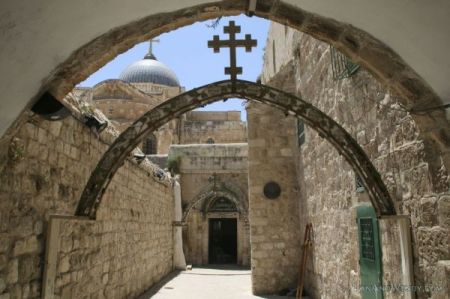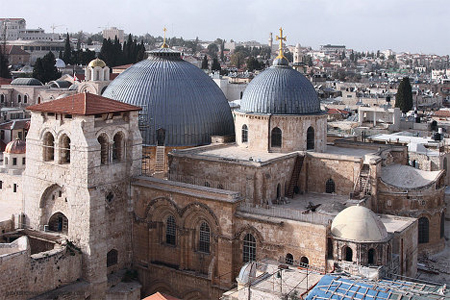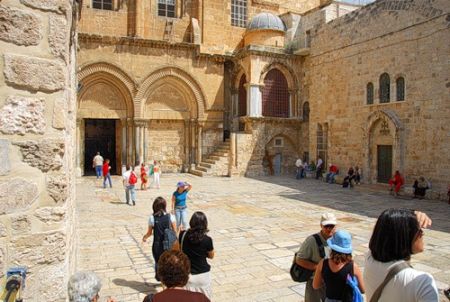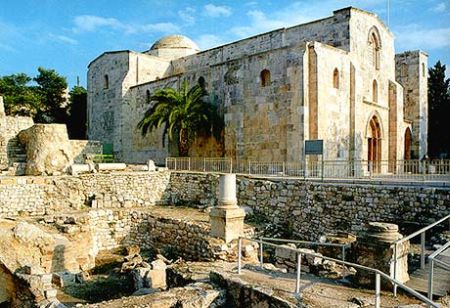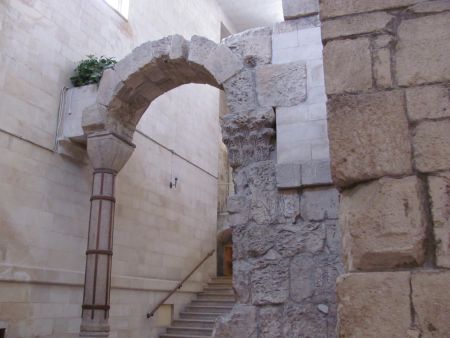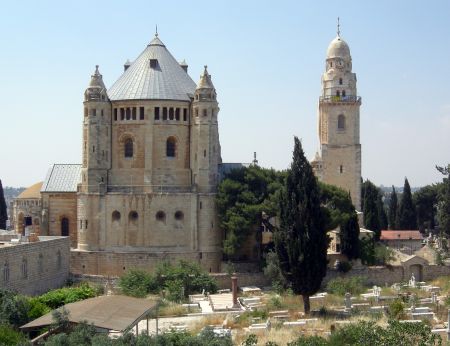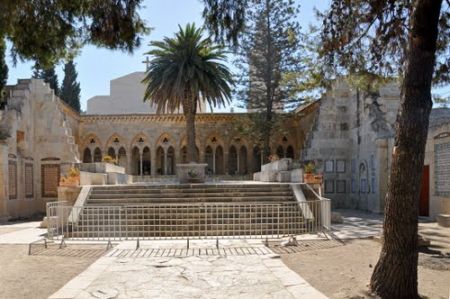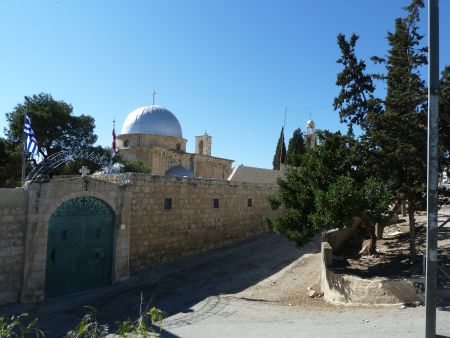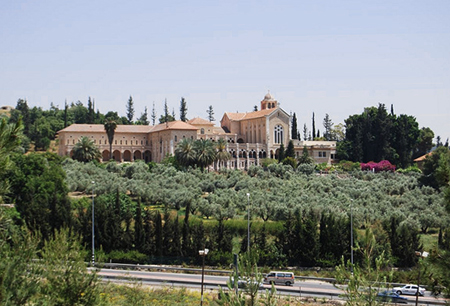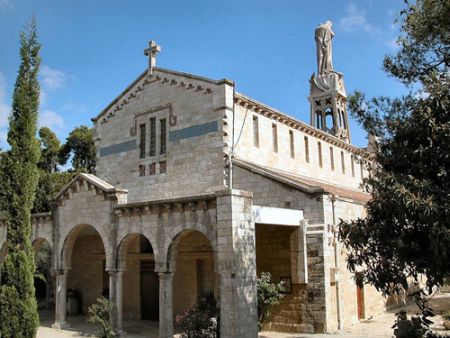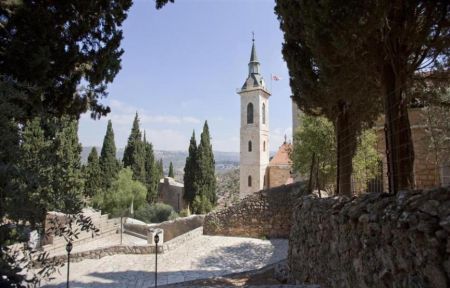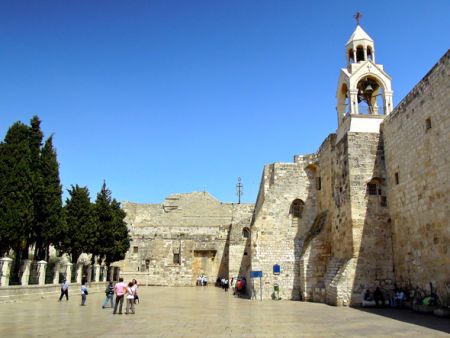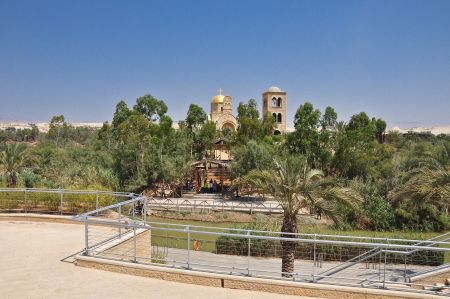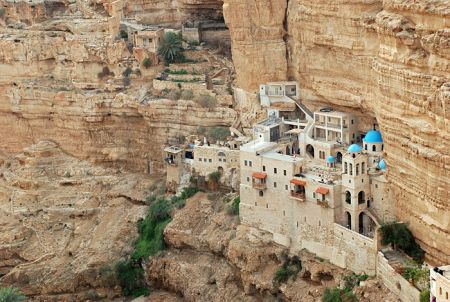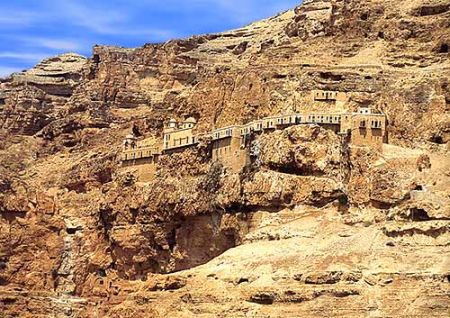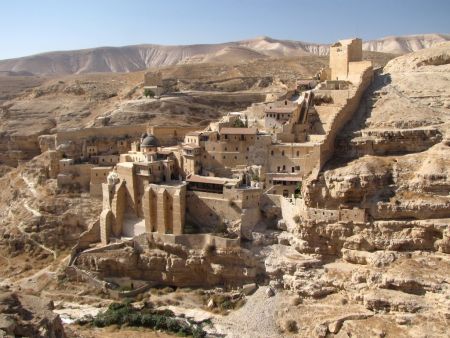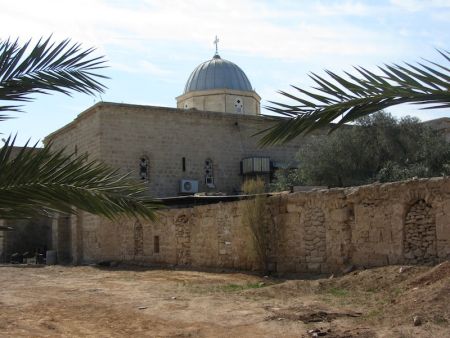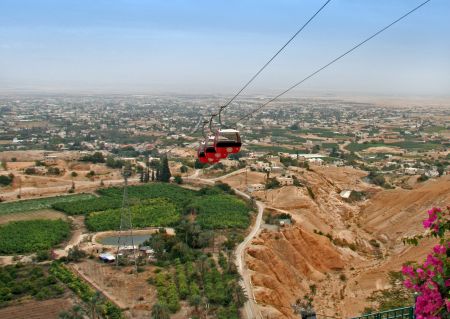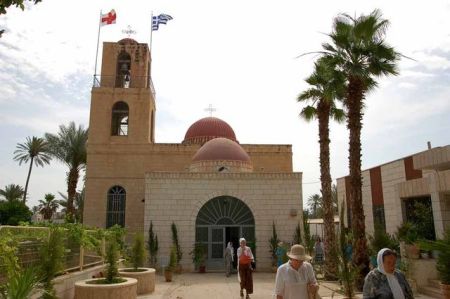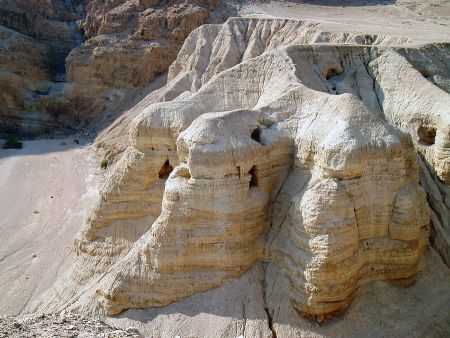Places to visit
North
Yardenit – the Baptismal Site.
Situated on the banks of the Jordan River, flowing forth from the Sea of Galilee, the baptismal site of Yardenit welcomes over half a million tourists and pilgrims annually who come to experience the spirituality and pastoral beauty of the waters of the River Jordan, in which Jesus was baptized by John the Baptist.
The sight is well equipped: 12 separate baptismal pools, enabling different groups to comfortably conduct private worship ceremonies. You can enjoy a varied range of services: changing rooms, showers, a store where you can buy not only gifts, but also the special baptismal white robes.
Megiddo. Armageddon in Christian tradition.
Megiddo is one of the richest archaeological sites in Israel. Canaanite temples, governor’s palace of King Solomon times, the strengthening of the same period and more were discovered during the excavations.
Christian tradition identifies Megiddo as Armageddon, where the great battle at the end of days will take place between the powers of good and evil. Revelation 16:16.
Kursi.
Kursi is the ruins of a Byzantine Christian monastery and now an Israeli national park located east of the Sea of Galilee. According to the New Testament and Christian Tradition, here in Kursi Jesus performed the miracle of the pigs. He drives out the devils into a herd of swine, who “ran violently down a steep place into the sea and were choked in the sea”. It is told that Jesus disembarked from a boat here and met a man plagued by unclean spirits. Jesus then cast out the unclean spirits into a herd of pigs grazing nearby.
On the floor of the monastery is a beautiful mosaic floor which features images of animals, such as: roosters, geese and doves, as well as images of plants, such as: citrons, figs, pomegranates and clusters of grapes.
Capernaum.
National Park “Capernaum” is located on the northern coast of the Sea of Galilee. It is a place of pilgrimage for Christians, because the main attraction of the park is the ancient synagogue, which refers to the one in which Jesus Christ preached during his stay in the Galilee. The park demonstrates archaeological finds discovered during excavations.
Here was also discovered a structure which was identified as the house of the Apostle Peter. On top of this structure a Franciscan Church was built with a glass floor which allows looking at the ancient structural remains.
Church of the Multiplication of the Loaves and Fishes. Tabgha.
The Church is a Roman Catholic church located in Tabgha, on the northwest shore of the Sea of Galilee. The modern church rests on the site of two earlier churches.
The church is best known for Christ’s miraculous multiplication of loaves and fish. The New Testament (Mark 6:30, 44) describes how Jesus fed 5,000 people with only 5 loaves and 2 fish. Jesus and his disciples sailed out on the Sea of Galilee to “a remote place” (the location is not specified) they were seeking some tranquility and solitude but people ran ahead to meet them from the surrounding villages. When evening came Jesus, his disciples and 5,000 people who had gathered there were too far from any villages to get something to eat. So Jesus performed the miracle of dividing the food that the disciples had brought with them – five loaves and two fish – between the multitudes. The people ate until they were sated.
Muhraka. Carmelite Monastery.
Muhraka is located on the southern end of the Mount Carmel. The meaning of this monastery’s name, Muhraka, in Arabic is “place of burning”, as according to the Bible, in this place a fire came down from the sky to burn the sacrifice offered by the Prophet Elijah at the time of his battle with the prophets of Ba’al. The views seen from the monastery’s roof are breathtaking and on a clear day one can even see the snowcapped Mount Hermon from here.
Church of St. Mary Magdalene. Magdala.
Magdala was a major port on the Sea of Galilee, a center of trade and commerce, and an exporter of salted fish to markets as far away as Europe — but its fame down the centuries has rested on one famous person, Mary Magdalene. It was the birthplace of Mary Magdalene. Recent excavations have uncovered remains of the Roman city and a small Galilean style synagogue.
Church of the Transfiguration. Mount Tabor.
Mount Tabor is located in Lower Galilee, Israel, at the eastern end of the Jezreel Valley, 11 miles west of the Sea of Galilee. According to Christian tradition, this is the place where Jesus went through his Transfiguration in front of his disciples when his divine nature was revealed – his face shone like the sun and his clothes became white as light.
The Church of the Transfiguration is one of the most important in Christian world. It was built on top of the remains of ancient churches which were built here since the 4th century. It was designed by the famous Italian architect, Antonio Barluzzi so that the light that enters it will create the radiant atmosphere of the Transfiguration. The Church of the Transfiguration includes an altar and ancient ritualistic remains. Above the altar is a magnificent mosaic which depicts Jesus, Moses and Elijah together at the time of the Transfiguration. Next to the Church of the Transfiguration are a Franciscan Monastery and a Greek Orthodox Church which is named after the Prophet Elijah.
Church Sermon on the Mount. Mount of Beatitudes.
Located on a small hill overlooking the Sea of Galilee near Tabgha, the Mount of Beatitudes is the traditional site of Jesus’ delivery of the Sermon on the Mount, which included the core of his teachings, probably the most famous sermon of all time. Pilgrims have been drawn to this scenic place since at least the 4th century.
The church is located on the top of the Mount of Beatitudes, which rises to the height of 125 meters above the Sea of Galilee and provides a wonderful view of the area. Traditionally, it was here at the Mount of Beatitudes that Jesus chose his Twelve Apostles from among his disciples. The basalt Church of the Mount of Beatitudes was built in 1938, according to the plans of the famous Italian architect, Antonio Barluzzi. It is built in the shape of an octagonal, with each of its eight sides featuring one verse of the eight Beatitudes of the Sermon on the Mount. Near the church are a monastery, a hostel of Franciscan nuns, a garden and a farm belonging to the Italian mission in the Holy Land.
Nazareth.
Nazareth, in the lower Galilee, is located in the heart of a valley surrounded by mountains that embrace several of the most important Christian sites in the world. Nazareth is the cradle of Christianity, the city where, according to tradition, the angel Gabriel told Mary that she would conceive by the power of the Holy Spirit, and the place where Jesus spent his childhood and youth.
The Basilica of the Annunciation is the most famous Christian site in Nazareth. It is believed to be the home of the Virgin Mary and the place where the angel Gabriel announced to Mary that she was chosen to bear the son of God. St Joseph’s Church, also known as the Church of the Nutrition and Joseph’s Workshop, is located next to the Basilica of the Annunciation. Orthodox tradition has it that the Annunciation occurred not at Mary’s house but while she was fetching water. Therefore 17th-century Orthodox St. Gabriel’s Church is built over the spring that feeds the ancient Mary’s Well.
Cana of Galilee.
According to tradition, Cana of the Galilee is where Jesus performed the miracle of the wine, when he went to a wedding of a poor couple and turned water into wine. The village of Cana is located in the Lower.
In the center of the village are a few remains of ancient buildings and burial caves. The most important site in the village is the Catholic Church, built in 1879, on the traditional site of the miracle of the wine. Beside this church is the Greek Orthodox church of St. George, built in 1886, which house two stone jars that Greek Orthodox followers believe are the jars in which Jesus performed the miracle of the wine. There is also a church named after St. Bartholomew, built, according to tradition, on the site of the home of Nathaniel of Cana (St. Bartholomew), one of Jesus’ disciples.
Banias (Caesarea Philippi).
The Banias Nature Reserve contains an abundance of natural and historical beauty, from the ruins of ancient cities to the roaring Banias Waterfall – the biggest waterfall in Israel. An ancient site that developed around a spring once associated with the Greek god Pan, in the vicinity of the town of Caesarea Philippi. The spring is located at the foot of Mount Hermon, north of the Golan Heights, and constitutes one of the main sources of the Jordan River. The archaeologist have uncovered here a shrine dedicated to Pan and related deities, and the remains of an ancient city founded sometime after the conquest by Alexander the Great and inhabited all until 1967, and mentioned under the name of Caesarea Philippi by the Gospels of Matthew and Mark.
The Banias Spring emerges at the foot of Mount Hermon and flows powerfully through a canyon for 3.5 km, eventually leading to the Banias Waterfall, the most impressive cascade in Israel.
Center
Mount of Olives.
Separated from the Eastern Hill (the Temple Mount and the City of David) by the Kidron Valley, the Mount of Olives has always been an important feature in Jerusalem’s landscape. Its name came from the olive trees that once grew on its hillside from ancient times.
At the foot of the mountain, adjacent to the Church of All Nations, stand the Gardens of Gethsemane, in which one finds the golden turreted Russian Orthodox Church of Maria Magdalene. Besides the compound of churches adjacent to Mount Scopus at its north, which includes the Basilica of the Sacred Heart, the Basilica Eleona and the convent of Pater Noster, it is perhaps best known for the extensive cemetery that faces Jerusalem all along its western slopes.
Church of All Nations.
The Church of All Nations, also known as the Church or Basilica of the Agony, is a Roman Catholic Church located on the Mount of Olives in Jerusalem, next to the Garden of Gethsemane. It enshrines a section of bedrock where Jesus is said to have prayed before his arrest. (Mark 14:32-42).
The modern church stands on the foundations of two ancient churches: a 4th-century Byzantine basilica and a 12th-century Crusader chapel. The Basilica of the Agony was built from 1919-24 with funding from 12 different countries, which gave it its nickname: “the Church of All Nations.”
Chapel of the Ascension.
The Chapel of the Ascension is a shrine located on the Mount of Olives. Part of a larger complex consisting first of a Christian church and monastery, then an Islamic mosque, it is located on a site the faithful traditionally believe to be the earthly spot where Jesus ascended into Heaven forty days after his resurrection. It houses a slab of stone believed to contain one of his footprints.
Dominus Flevit Church.
Dominus Flevit is a Roman Catholic Church on the Mount of Olives, opposite the walls of the Old City of Jerusalem. The church was designed and constructed between 1953 and 1955 by the Italian architect Antonio Barluzzi and is held in trust by the Franciscan Custody of the Holy Land. The church is shaped as a tear drop. A Roman-Byzantine necropolis was also excavated at the site, revealing rich findings. The church name is Latin for “The Lord Wept”. Here, according to Christian tradition, Jesus cried when he arrived in Jerusalem, predicting the destruction of the temple (Luke 19:41-44).
Church of Mary Magdalene.
The Church of Mary Magdalene is a Russian Orthodox Church located on the Mount of Olives, near the Garden of Gethsemane and is one of the most easily recognizable landmarks of Jerusalem. This striking example of Russian architecture was built in the Muscovite style with golden onion domes or cupolas. It commemorates the enigmatic Mary from Magdala – revered as a saint by the Orthodox, Catholic, Anglican and Lutheran churches – who was one of the few persons named in the Gospels as being present at Christ’s crucifixion and who was the first recorded witness of his Resurrection.
In its convent live about 30 Russian Orthodox nuns from several different countries. While particularly known for the quality of their liturgical singing, they also paint icons, embroider vestments and items for liturgical use, and decorate Russian eggs.
Via Dolorosa.
The Via Dolorosa is a street, in two parts, within the Old City of Jerusalem, held to be the path that Jesus walked, carrying his cross, on the way to his crucifixion. The winding route from the Antonia Fortress west to the Church of the Holy Sepulcher — a distance of about 600 meters — is a celebrated place of Christian pilgrimage. The current route has been established since the 18th century, replacing various earlier versions. It is today marked by nine Stations of the Cross; there have been fourteen stations since the late 15th century, with the remaining five stations being inside the Church of the Holy Sepulchre.
Church of the Holy Sepulcher.
The Church of the Holy Sepulcher is a church within the Christian Quarter of the Old City of Jerusalem. The site is venerated as Calvary (Golgotha), where Jesus was crucified, and also contains the place where Jesus is said to have been buried. The church has been an important Christian pilgrimage destination since at least the 4th century as the purported site of the resurrection of Jesus.
According to Eusebius, the Roman emperor Hadrian in the 2nd century built a temple dedicated to the Roman goddess Venus in order to bury the cave in which Jesus had been buried. The first Christian Emperor, Flavius Constantinus, ordered in about 325/326 that the temple be replaced by a church. During the building of the Church, Constantine’s mother, Helena, is believed to have rediscovered the True Cross, and a tomb.
Today the Church of the Holy Sepulcher also serves as the headquarters of the Greek Orthodox Patriarch of Jerusalem, while control of the building is shared between several Christian churches and secular entities in complicated arrangements essentially unchanged for centuries. Today, the church is home to branches of Eastern Orthodoxy and Oriental Orthodoxy as well as to Roman Catholicism. Anglicans and Protestants have no permanent presence in the Church and some have regarded the Garden Tomb, elsewhere in Jerusalem, as the true place of Jesus’s crucifixion and resurrection.
Chapel of St. Mary of Egypt.
To the left of the main entrance to the Church of the Holy Sepulcher there is a small chapel, commemorating the life and death of St. Mary of Egypt. At a young age, she ran away from home and went to Alexandria, where she spent a life of sin and debauchery. 17 years later, she went to Jerusalem. When she came to the gate of the Holy Sepulchre, she was struck by a gust of wind, which did not allow her to enter. She realized the wonderful nature of this wind and turned to the icon of the Virgin Mary and prayed for forgiveness. She vowed that if she was allowed to enter the temple, it would have then gone into seclusion. Going to church and prayed, she again heard a voice telling her to go east and cross the Jordan River, there she will gain true peace. In the church, pilgrims can see the icon of the Virgin Mary, to whom Mary Magdalene prayed.
Church of St. Anne.
The Church of St. Anne is a Roman Catholic church, located at the start of the Via Dolorosa, near the Lions’ Gate and churches of the Flagellation and Condemnation, in the Muslim Quarter of the old city of Jerusalem. It is the best-preserved Crusader church in Jerusalem. It marks the traditional site of the home of Jesus’ maternal grandparents, Anne and Joachim, and the birthplace of the Virgin Mary.
The Church of St Anne is renowned for its remarkable acoustics and reverberating echoes. The voices of even a small choral group can sound like a large congregation in a vast cathedral.
Church of St. Alexander Nevsky.
The Church of Saint Alexander Nevsky is a Russian Church located in Jerusalem near the Church of the Holy Sepulcher. During construction of the Church, remains of what was thought to be the Judgement Gate through which Jesus passed on his way to Golgotha, were discovered. The present church is built over these remains, and also incorporates part of the Herodian city wall, and vestiges of the pagan temple erected by Hadrian after the destruction of Jerusalem in 70 A.D.
The Church today is constantly restoring the beautiful works of art and icons that adorn its interior chapels, including a dramatic portrayal of Jesus carrying the Cross by the well-known, 19th century Russian painter Ilia Repine.
Dormition Abbey.
Dormition Abbey is an abbey and the name of a Benedictine community in Jerusalem on Mt. Zion just outside the walls of the Old City near the Zion Gate. It commemorates the memory of Virgin Mary, in the traditional site of her death (the name means “Eternal sleep”).
The complex was built in the beginning of the 20th century over the ruins of a Byzantine church. It is also called Hagia-Maria-Sion Abbey, named after the Byzantine church. The church today is open to the public and is a popular place for pilgrims and tourists.
Church of the Pater Noster.
The Church of the Pater Noster is a partially reconstructed Roman Catholic church located on the Mount of Olives, north of the Tombs of the Prophets. It is located at the site of the ruins of the “Eleona” Basilica, built in the 4th C by Constantine. The Byzantine church was built over a cave where according to tradition was the place where Jesus hid with his disciples and taught the “Our Father” (Pater Noster) prayer, one of the most important prayers in Christianity. The Crusaders rebuilt part of the church, and a new convent was built in the 19th C.
The Holy Trinity Cathedral and the Russian Compound.
The Russian Compound is one of the oldest districts in central Jerusalem, including a large Russian Orthodox Church and several former pilgrim hostels which are used as government buildings and for the Museum of Underground Prisoners. The compound’s construction from 1860-1864 was initiated by the Imperial Orthodox Palestine Society to serve the large amounts of Russian pilgrims to the holy city.
The Holy Trinity Cathedral was built as the center of the Russian Compound with funds donated by the people of the Russian Empire. Construction began in 1860, the magnificent edifice was consecrated in 1872. The whole surface of its interior main hall and dome and two aisles is painted an inspiring celestial blue with salmon accents and numerous depictions of saints. The church has four octagonal bell towers. Over the years the bright green domes made this one of Jerusalem’s most distinctive churches.
Bethany.
Bethany is a Muslim and Christian Arab village on the southeast slopes of the Mount of Olives, Jerusalem. Bethany was the home of the Lazarus, Mary and Martha and the setting for a number of New Testament events.
The present Catholic Church, with mosaics depicting the events that occurred here, was built in 1954. Architect Antonio Barluzzi contrasted the sadness of death with the joy of resurrection by designing a crypt-like, windowless church, into which light floods from the large oculus in its dome. A Greek Orthodox Church, dedicated to Simon the Leper, is to the west of the tomb.
Trappist Monastery. Latrun.
Latrun is the place of a Trappist Monastery. It is located at a strategic hilltop in the Latrun Salient in the Ayalon Valley. It overlooks the road between Tel-Aviv and Jerusalem, 25 kilometers west of Jerusalem.
The walkways of the monastery, built in the early twentieth century by French Trappist monks, charmingly frame vineyards from which they make grape juice and wine, and their church is an interesting mixture of Byzantine and Gothic styles. The monks keep a vow of silence, except for those who sell wine and olive oil to visitors.
Church of our Lady of the Arc of Covenant in Abu Gosh.
Not far away from the Benedictine Monastery of Abu Gosh, at the town’s north-west edge, one detects an impressive statue of the Madonna and Child. This statue stands on the roof of the Church of our Lady of the Arc of Covenant. The church itself, situated at the height of 750 meters above sea level, stands on top of the ancient Mound of Kiryat Ye’arim, overlooking the views of the whole area. On this mound the Byzantines built a church which was destroyed in 614 when the Persians conquered the country. A few decades later it was restored and it survived until the beginning of the 11th century. Since then it was forgotten. In 1912 a convent and a church were built here by the order of St.Joseph de l’Apparition. The church’s design is pleasantly simple and the white color resides over a great part of its interior. Arches, pillars with capitals and a wooden ceiling featuring images of angels are a wonderful and vibrant setting.
Ein Karem.
Ein Karem is an ancient village of the Jerusalem District and now a neighborhood in southwest Jerusalem. It is one of the most picturesque neighborhoods of Jerusalem.
For Christians, Ein Karem is best known as the birthplace of John the Baptist, and in fact is considered one of the top Jerusalem tour destinations for Christian pilgrims. The village is home to five churches and monasteries: The Church of St. John the Baptist (not to be confused with a church in the Old City by the same name), Visitation Church, the Notre Dame de Sion convent, the Greek Orthodox St. John convent, and the Al Moskovia Russian monastery (originally called the Gorny Monastery). Additionally, a focal point is the famous Mary’s Well, where it’s believed that Mary, miraculously pregnant with Jesus, sat and drank from its spring waters while sitting with Elizabeth, who was miraculously pregnant with John at the same time.
Church of the Nativity in Bethlehem.
The Church of the Nativity in Bethlehem is a major Christian holy site, as it marks the traditional place of Christ’s birth. It is also one of the oldest surviving Christian churches.
The church was originally commissioned in 327 AD by Constantine and his mother Helena over the site that is still traditionally considered to be located over the cave that marks the birthplace of Jesus. The Church of the Nativity site’s original basilica was completed in 339 AD and destroyed by fire during the Samaritan Revolts in the sixth century AD. A new basilica was built 565 AD by Justinian, the Byzantine Emperor, restoring the architectural tone of the original. The site of the Church of the Nativity has had numerous additions since this second construction. The site is included in UNESCO World Heritage List.
South
Qasr el Yahud.
Qasr el Yahud is a baptism site in the Jordan River Valley in the West Bank. It is the traditional spot where the New Testament narrative of the baptism of Jesus took place (Matthew 3:13-17). The site includes marble steps that descend into the Jordan River as well as ruins of Byzantine and Crusader churches. It reopened in 2010 after being closed for 44 years.
St. George’s Monastery, Wadi Qelt.
St. George Orthodox Monastery, or Monastery of St. George of Koziba is located in Wadi Qelt, in the eastern West Bank. The sixth-century cliff-hanging complex, with its ancient chapel and gardens, is active and inhabited by Greek Orthodox monks. It is reached by a pedestrian bridge across the Wadi Qelt, which many imagine to be Psalm 23’s Valley of the Shadow. The valley parallels the old Roman road to Jericho, the backdrop for the parable of the Good Samaritan (Luke 10:29-37). The monastery is open to pilgrims and visitors.
The monastery was built in the late 5th century AD by John of Thebes. He became a hermit and moved here from Egypt in AD 480. The monastery was named St. George after the most famous monk who lived at the site – Gorgias of Coziba. Destroyed in 614 by the Persians, the monastery was rebuilt in the Crusader Period. It fell into disuse after the expulsion of the Crusaders. In 1878 a Greek monk, Kalinikos, settled here and restored the monastery, finishing it in 1901. Now the monastery is open to pilgrims and visitors.
Monastery of the Temptation in Jericho.
The Monastery of the is an Orthodox Christian monastery located in the West Bank, along a cliff overlooking the city of Jericho and the Jordan Valley. It is built upon the summit of the Mount of Temptation, rising 350 meters above sea level. It is traditionally regarded as the mountain on which Christ was tempted by the devil during his 40-day fast.
Mar Saba Monastery.
The Greek Orthodox Mar Saba Monastery in the Judean Desert east of Bethlehem seems to hang precariously from the walls of the Kidron Valley. But it is as sturdy as the faith it represents: it was built some 1,500 years ago, and is one of the oldest still-inhabited monasteries in the world. It was established by Saint Sabas (Arabic: Mar Saba), and named after him. The monastery started as a place of seclusion of few monks in the caves, led by Sabas. Over the years it was built, expanded, and fortified. During the peak times it housed about 500 monks.
St. Gerassimos Monastery of the Jordan.
A Greek Orthodox monastery located close to the north side of the Dead Sea. Founded in the 5th C by Abbot Gerassimos of the Jordan, it is one of the earliest monasteries. According to Christian tradition the monastery is recognized as one of the places Mary, Joseph and Jesus stopped at to stay on their way to Egypt, when they were fleeing from King Herod.
Jericho.
Jericho is a green oasis in the Jordan Valley which lies 7 km west of the River Jordan, 10 Km north of the Dead Sea and 30 Km east of Jerusalem. It lies 250 meters below sea level and thus it is considered to be the lowest city in the world. Jericho is one of the oldest city in the world. The ruins of the oldest civilization discovered in Jericho are 10,000 years old. There are a lot of important and beautiful historical places to visit in Jericho, such as Old Jericho, River Jordan where Jesus Christ was baptized, Mount of Temptation, Hisham Palace, Ein Al-Sultan (Elisha) spring, Sycamore tree, Monastery of Saint George (Wadi Kelt), Hasmoneans (Herod) Palace, Monastery of Dier hajlah, Kumran Caves, Dead Sea, and a lot more.
Greek Monastery of the Prophet Elisha.
This is men’s Greek monastery. It is located between the mountains and is a little oasis in the valley. There is a sycamore fig tree – the tree on which Zacchaeus climbed up to see the Jesus. The tree is still standing green and bears fruit figs.
Qumran.
Qumran is an archaeological site, located on a dry plateau about a mile inland from the northwestern shore of the Dead Sea, near the Israeli settlement and kibbutz of Kalya. The Hellenistic period settlement was constructed during the reign of John Hyrcanus, 134-104 BCE or somewhat later, and was occupied most of the time until it was destroyed by the Romans in 68 CE or shortly after. It is best known as the settlement nearest to the caves where the Dead Sea Scrolls were hidden, caves in the sheer desert cliffs and beneath, in the marl terrace. The principal excavations at Qumran were conducted by Roland de Vaux in the 1950s, though several later campaigns at the site have been carried out.
At the visitor center, designed like Qumran’s ancient buildings, an exciting film links the fabulous landscape with the story of its people, recalling that John the Baptist may have lived here.

